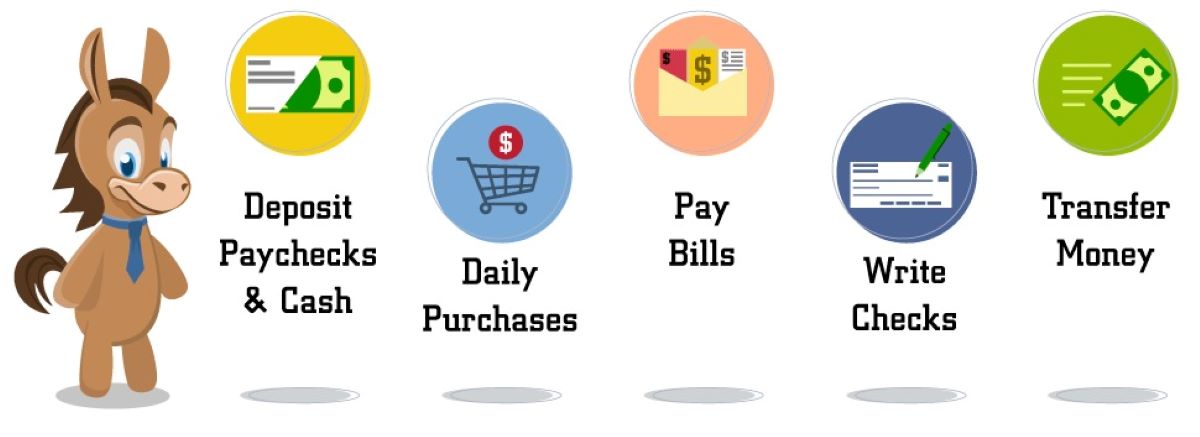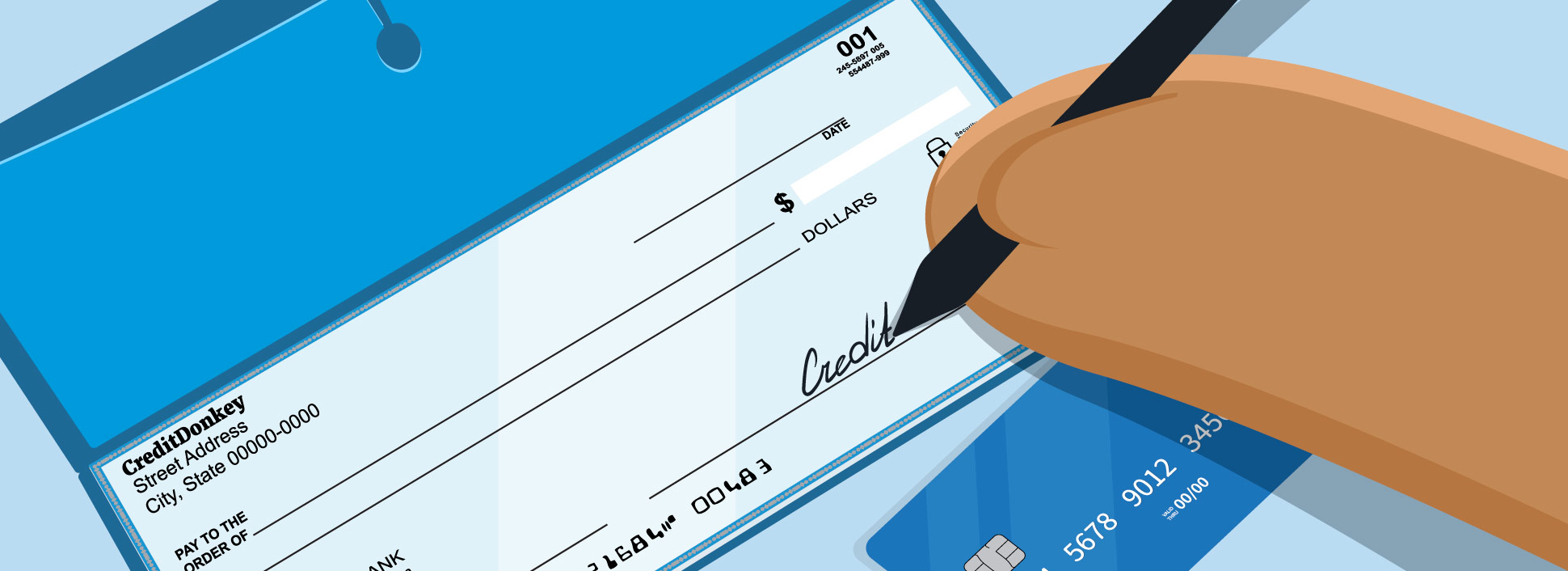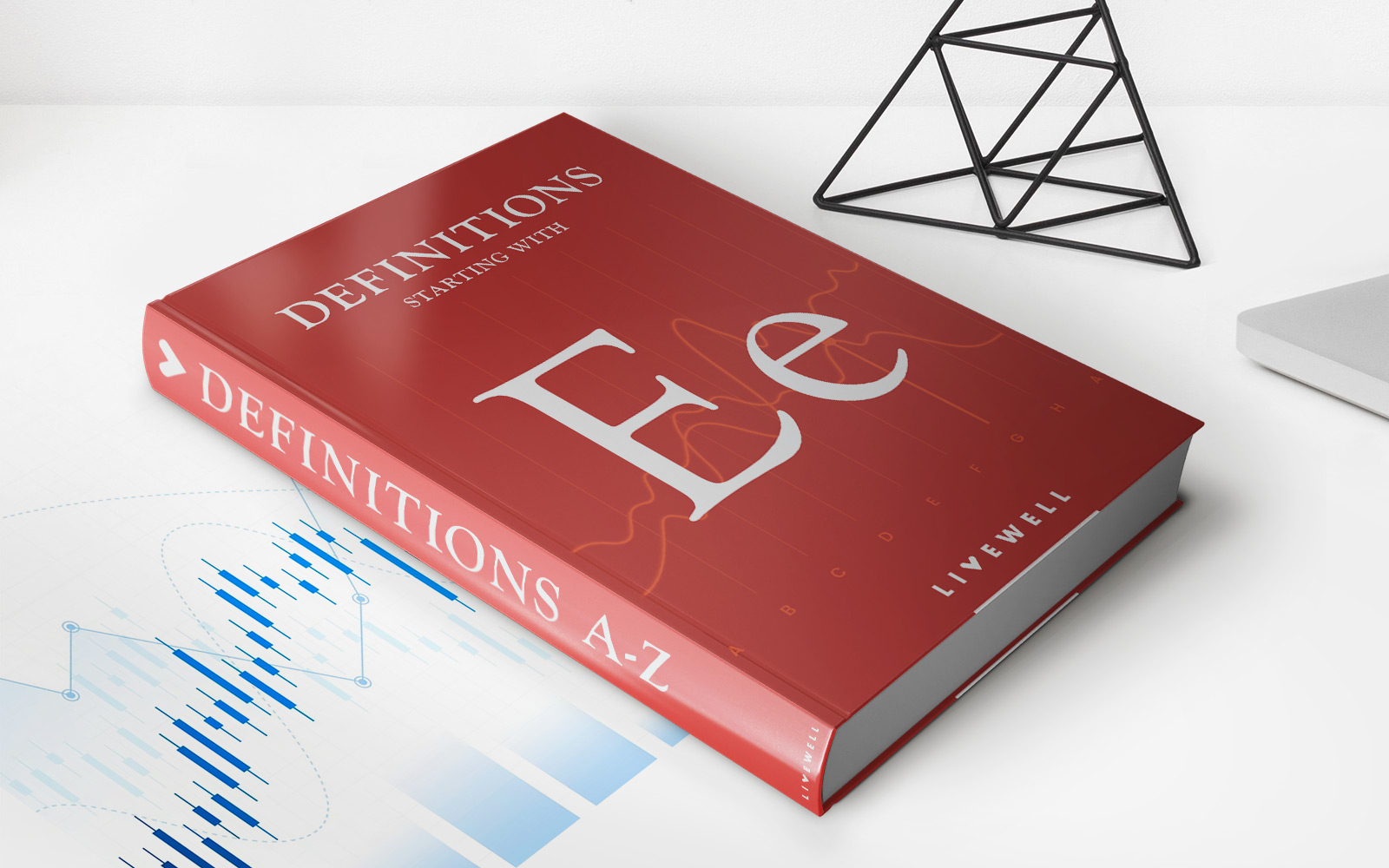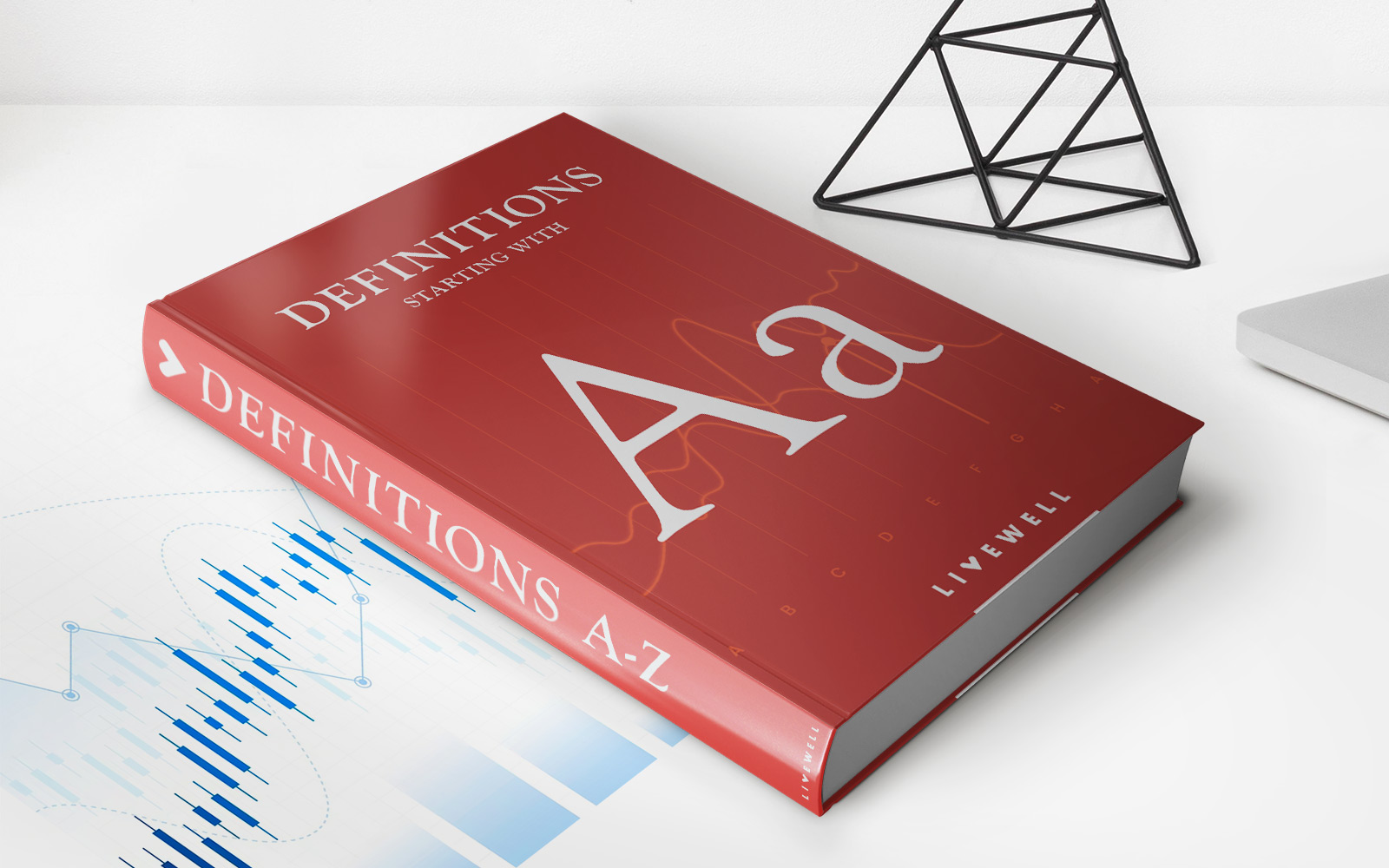

Finance
What To Ask When Opening A Checking Account
Published: October 28, 2023
Looking to open a checking account? Ask these essential finance-related questions to make the right choice and manage your money effectively.
(Many of the links in this article redirect to a specific reviewed product. Your purchase of these products through affiliate links helps to generate commission for LiveWell, at no extra cost. Learn more)
Table of Contents
Introduction
Opening a checking account is an important financial step for many individuals. Whether you’re starting out on your own, have recently moved to a new area, or simply looking to make a change, having a checking account is essential for day-to-day financial management. But with so many banks and account options available, how do you know which one is right for you?
In this comprehensive guide, we will explore the key factors to consider when opening a checking account. From understanding the different types of accounts to evaluating the features and benefits offered by various banks, we will provide you with the knowledge and insights necessary to make an informed decision.
A checking account serves as a centralized hub for your financial transactions. It allows you to deposit and withdraw money, write checks, make online payments, and even set up direct deposits. With the advent of digital banking, accessing and managing your account has become more convenient than ever. However, not all checking accounts are created equal, and it’s crucial to examine the specific details and terms before committing to a particular bank or account.
When opening a checking account, it’s essential to consider factors such as account fees, minimum balance requirements, overdraft protection, debit card availability, and online banking services. These features can significantly impact the overall functionality and cost-effectiveness of your account. Additionally, you’ll want to evaluate the level of customer service and support provided by the bank.
With this guide, we aim to help you navigate the complexities of opening a checking account. By asking the right questions and understanding the various aspects involved, you can secure a checking account that aligns with your financial goals and lifestyle.
So let’s dive in and explore what you need to know when opening a checking account!
Understanding Checking Accounts
Before diving into the process of opening a checking account, it’s important to have a clear understanding of what exactly a checking account is and how it functions.
A checking account is a type of bank account that allows individuals to deposit and withdraw funds for daily transactions. It serves as a convenient way to manage your day-to-day finances, including paying bills, making purchases, and accessing cash. Unlike a savings account, which is primarily used for long-term savings, a checking account is designed for frequent and immediate use.
When you open a checking account, the bank provides you with a set of account details, including an account number and a routing number. These numbers are essential for facilitating transactions, such as direct deposits, electronic payments, and check processing.
One of the main benefits of having a checking account is the ability to write checks. A check is a written order that instructs the bank to pay a specified amount of money from your account to the person or entity named on the check. This can be particularly useful when making payments to businesses or individuals who do not accept electronic forms of payment.
In addition to writing checks, most checking accounts come with a debit card. A debit card allows you to make purchases directly from your checking account by swiping the card or entering your card details online. It provides a convenient and secure alternative to carrying cash and can be used at millions of locations worldwide.
Checking accounts also offer various methods for accessing cash. Most banks provide their account holders with access to automated teller machines (ATMs), where they can withdraw cash and perform other banking operations. Some banks may have their own network of ATMs, while others may have partnerships with other banks to offer wider access.
In recent years, online and mobile banking services have become increasingly popular and are now a standard feature offered by most banks. These services allow you to access your checking account and perform various transactions through a secure website or mobile app. With online and mobile banking, you can check your account balance, view transaction history, transfer funds, and even deposit checks using your smartphone’s camera.
By understanding the features and functions of a checking account, you can better assess your financial needs and choose an account that suits you best. The next step is selecting the right bank to open your account with, which we will explore in the following section.
Choosing the Right Bank
When it comes to opening a checking account, choosing the right bank is crucial. The bank you select will not only hold your money but also provide the services and support necessary for your financial needs. Here are some factors to consider when selecting a bank:
- Reputation and Trustworthiness: Look for a bank that has a solid reputation and is known for its trustworthiness and financial stability. Research the bank’s track record, customer reviews, and any news or scandal surrounding the institution.
- Location and Accessibility: Consider the bank’s physical locations and how easily accessible they are for your day-to-day needs. If you prefer in-person banking, choose a bank with branches and ATMs conveniently located near your home, work, or frequented areas.
- Online and Mobile Banking: Evaluate the bank’s online and mobile banking services. A robust and user-friendly digital banking platform can provide convenience and flexibility, allowing you to manage your account from anywhere at any time.
- Account Fees and Charges: Take note of the fees and charges associated with the checking account. These can include monthly maintenance fees, ATM withdrawal fees, overdraft fees, and minimum balance requirements. Compare the fee structures of multiple banks to ensure you choose an account with reasonable costs.
- Interest Rates: Although checking accounts typically do not offer high-interest rates, some banks may provide a small amount of interest on the account balance. If earning interest is important to you, inquire about the interest rate offered.
- Customer Service and Support: Consider the bank’s reputation for customer service. Look for a bank that provides responsive and helpful support in case you encounter any issues or have questions about your account.
In addition to these factors, it’s essential to consider your personal preferences and financial goals. If you prefer a bank with a community focus or certain ethical standards, research banks that align with your values. Furthermore, if you anticipate needing additional financial services in the future, such as loans or mortgages, it may be worth considering a bank that offers a wide range of products.
By taking these factors into account and conducting thorough research, you can choose a bank that suits your needs and provides a positive banking experience. Once you’ve selected a bank, the next step is to evaluate the specific checking account options they offer, including account fees, minimum balance requirements, and additional features, as we will explore in the next sections.
Account Fees and Charges
When opening a checking account, it is essential to carefully consider the fees and charges associated with the account. These fees can vary greatly between banks and account types, so it is important to understand what you may be charged for. Here are some common fees and charges to be aware of:
- Monthly Maintenance Fee: Many banks charge a monthly fee for maintaining a checking account. This fee can vary depending on the bank and the type of account you choose. Some banks offer accounts with no monthly maintenance fee, especially for students or if you meet certain criteria, such as maintaining a minimum balance or setting up direct deposits.
- ATM Withdrawal Fee: If you frequently withdraw cash from ATMs that are not affiliated with your bank, you may be charged a fee for each withdrawal. Some banks have a network of ATMs where you can withdraw cash without incurring extra charges. Consider the availability and convenience of the bank’s ATM network to minimize these fees.
- Overdraft Fee: An overdraft occurs when you spend more money than is available in your checking account. If you do not have overdraft protection in place, your bank may charge you an overdraft fee for each transaction that exceeds your account balance. These fees can add up quickly, so it is crucial to monitor your account and consider opting for overdraft protection if available.
- Non-Sufficient Funds Fee: Similar to an overdraft fee, a non-sufficient funds (NSF) fee is charged when you attempt to make a payment or write a check that exceeds your available account balance. This fee is levied when your bank rejects the payment due to insufficient funds. Keeping track of your account balance and ensuring sufficient funds are available can help avoid these fees.
- Paper Statement Fee: Some banks charge a fee for mailing physical paper statements to your address. If you prefer receiving electronic statements or have access to online banking, you can often avoid this fee by opting for paperless statements.
- Additional Service Charges: Banks may have additional service charges for various transactions or services, such as wire transfers, stop payments, or ordering checks. Review the bank’s fee schedule to understand the charges associated with these additional services.
It is important to carefully review the fee schedule provided by your chosen bank and assess how these fees may impact your account. Consider your banking habits and preferences to select an account that offers the most advantageous fee structure for your needs. Keep in mind that some fees can be waived or reduced by meeting certain requirements, such as maintaining a minimum account balance or using direct deposit services.
By understanding and comparing the fees and charges associated with different checking accounts, you can make an informed decision and choose an account that aligns with your financial goals and minimizes unnecessary expenses.
Minimum Balance Requirements
One important factor to consider when opening a checking account is the minimum balance requirement set by the bank. The minimum balance is the lowest amount of money you need to keep in your account to avoid certain fees or penalties. Here’s what you need to know about minimum balance requirements:
Many banks offer different types of checking accounts, each with its own minimum balance requirements. Some accounts may require a higher minimum balance to avoid monthly maintenance fees, while others may have no minimum balance requirement at all.
If you can maintain the minimum balance specified by the bank, you can often avoid incurring additional fees. However, if your balance falls below the required minimum, you may face monthly maintenance fees, service charges, or other penalties. It’s important to understand the specific terms and conditions of the account you choose and determine whether you can comfortably meet the minimum balance requirement.
When evaluating minimum balance requirements, consider your typical account balance and monthly cash flow. If you tend to have a consistently higher account balance, a checking account with a higher minimum balance requirement may not pose any challenges. However, if your balance fluctuates or tends to be lower, you may want to opt for an account with a lower minimum balance requirement or no minimum balance at all.
In some cases, banks may offer tiered accounts, where different minimum balance requirements correspond to different sets of account benefits and features. For example, a higher minimum balance may grant you access to additional perks such as higher interest rates, ATM fee waivers, or discounted or free checks. If you anticipate maintaining a higher balance, these tiered accounts can offer added value.
It’s important to note that minimum balance requirements can vary significantly between banks, so it’s worth shopping around and comparing account options. Consider your financial habits and goals, as well as your ability to maintain a minimum balance, when selecting an account with suitable minimum balance requirements.
Lastly, be aware of any additional terms associated with the minimum balance requirement. Some banks may impose penalties, such as reduced interest rates or account closure, if your balance consistently falls below the minimum requirement.
By understanding and evaluating the minimum balance requirements set by different banks, you can choose a checking account that aligns with your financial situation and ensures you can avoid unnecessary fees and penalties.
Overdraft Protection
Overdraft protection is a feature offered by many banks that can help prevent your checking account from going into a negative balance when you make a transaction that exceeds your available funds. It provides a safety net to cover shortfalls and helps avoid overdraft fees and potential consequences. Here’s what you need to know about overdraft protection:
When you make a transaction that exceeds your available balance, a bank without overdraft protection would typically deny the transaction or charge you an overdraft fee. However, with overdraft protection in place, the bank will cover the shortfall by transferring funds from another linked account, such as a savings account or a credit line, to cover the transaction.
There are different types of overdraft protection offered by banks, including:
- Savings Account Link: Many banks allow you to link your checking account to a savings account. In the event of an overdraft, funds will be automatically transferred from your savings account to cover the transaction. While this can be a convenient option, be aware that some banks may charge a fee for each transfer or have a limit on the number of transfers allowed per month.
- Line of Credit: Some banks offer an overdraft line of credit, where you can borrow funds to cover overdrafts. This operates similarly to a personal line of credit, and you will be charged interest on the borrowed amount. Be sure to review the terms and interest rates associated with the line of credit before opting for this form of overdraft protection.
- Overdraft Transfer: Another form of overdraft protection is an overdraft transfer, where funds are transferred from one linked account to cover the overdraft. This can include a credit card, an installment loan, or even a separate checking account. Similar to a savings account link, there may be fees or limits associated with this type of transfer.
It’s important to note that overdraft protection is not necessarily automatic. You may need to opt-in to the service and choose the specific type of overdraft protection you prefer. Take the time to understand the terms, fees, and implications of the overdraft protection offered by your chosen bank before making a decision.
While overdraft protection can be a helpful feature to avoid fees and the embarrassment of declined transactions, it’s important to use it responsibly. Overdraft protection is not intended as a long-term solution for managing your finances. Regularly monitoring your account balance and spending habits can help you maintain a positive balance and avoid relying on overdraft protection.
By understanding the different types of overdraft protection available and evaluating their terms and fees, you can make an informed decision about whether to opt-in to this service and choose the most suitable form of overdraft protection for your financial needs.
Debit Cards and ATM Access
When opening a checking account, one important aspect to consider is the availability of a debit card and the extent of ATM access provided by the bank. A debit card serves as a convenient and secure payment method, while ATM access ensures easy access to cash and other banking services. Here’s what you need to know:
A debit card is typically issued with a checking account and is linked directly to your account balance. It allows you to make purchases in-store and online, similar to a credit card, but the funds are debited directly from your checking account. This can help you manage your spending and avoid accumulating debt.
When choosing a bank, inquire about the features and benefits of their debit card. Many banks offer additional perks such as cashback rewards, purchase protection, and fraud monitoring. Some banks may also have partnerships or affiliations that provide discounts or offers when using your debit card with certain merchants or retailers.
ATM access is another important consideration. Ensure that the bank has a robust network of ATMs and branches that are conveniently located for your needs. Look for a bank that offers widespread ATM coverage in the areas you frequent, reducing the risk of incurring fees when withdrawing cash or accessing other banking services.
Some banks have their own ATMs, while others may have partnerships with other banks or ATM networks. The availability of fee-free or discounted access to ATMs is particularly important if you regularly withdraw cash or make deposits in person.
Keep in mind that some banks may charge fees for using ATMs that are not part of their network. These fees can vary, so it’s important to understand the fee structure and how it aligns with your banking habits and needs.
If frequent access to cash is important to you, consider a bank that offers widespread ATM coverage and fee-free access to a large network of ATMs. However, if you primarily rely on digital banking and rarely use ATMs, this may be less of a concern.
Additionally, inquire about any daily withdrawal limits imposed by the bank. Some banks may have restrictions on the amount of cash you can withdraw in a single day, which can be a consideration if you anticipate needing large sums of cash on occasion.
By considering the availability and convenience of a debit card and ATM access, you can choose a checking account that aligns with your spending habits and ensures easy access to cash when you need it.
Online and Mobile Banking Services
In today’s digital age, online and mobile banking services have become an integral part of managing our finances. When opening a checking account, it’s important to consider the online and mobile banking capabilities offered by the bank. Here’s why:
Online and mobile banking platforms provide convenience and flexibility, allowing you to access and manage your checking account from anywhere at any time. They offer a range of features that can simplify your financial management, including:
- Account Balance and Transaction History: Check your account balance in real-time and view transaction history at a glance. Keep track of your spending, deposits, and withdrawals with ease.
- Funds Transfer: Transfer funds between accounts, such as moving money from savings to checking or making payments to credit cards, loans, or other accounts.
- Bill Payment: Set up recurring or one-time bill payments directly from your checking account. Many banks offer the ability to pay bills electronically, eliminating the need for writing checks or sending physical payments.
- Mobile Deposit: Deposit checks using your smartphone’s camera. Simply take a photo of the front and back of the check, and the funds will be deposited directly into your checking account.
- Alerts and Notifications: Receive alerts and notifications about important account activities, such as low balance alerts, deposit confirmations, and suspicious transaction alerts.
- Budgeting and Financial Management Tools: Some online and mobile banking platforms provide budgeting and financial management tools to help you track and categorize your expenses, set saving goals, and gain insights into your spending habits.
- Secure Messaging: Communicate with your bank securely through the online or mobile platform. Ask questions, seek support, or request assistance without needing to visit a physical branch.
When evaluating a bank’s online and mobile banking services, consider the user-friendliness of the platform and its compatibility with your preferred devices (such as smartphones, tablets, or desktop computers). Look for features that align with your financial management needs and ensure that the platform offers secure encryption to protect your personal and financial information.
Additionally, check if the bank has a dedicated mobile app for banking on the go. Mobile apps often provide a more streamlined and optimized experience, giving you easy access to your account and key features with just a few taps.
By leveraging online and mobile banking services, you can streamline your financial management, save time, and gain more control over your checking account. Ensure that the bank you choose offers a robust and user-friendly online and mobile banking platform to enhance your banking experience.
Account Security and Fraud Protection
When opening a checking account, ensuring the security of your funds and protecting against fraudulent activities is of utmost importance. Here are some key factors to consider regarding account security and fraud protection:
Encryption and Secure Access: Inquire about the bank’s security measures, such as encryption protocols and secure access methods. Look for banks that use advanced security technologies to protect your personal and financial information when accessing your account online or through mobile devices.
Two-Factor Authentication: Check if the bank offers two-factor authentication (2FA) for accessing your account. 2FA adds an extra layer of security by requiring a second form of authentication, such as a unique code or fingerprint scan, in addition to your username and password.
Alerts and Notifications: Find out if the bank provides proactive alerts and notifications for account activities. These alerts can help you monitor suspicious transactions, unusual login attempts, or changes to your account settings, allowing you to take immediate action if needed.
24/7 Fraud Monitoring: Ensure that the bank has robust fraud monitoring systems in place to detect and prevent unauthorized transactions and fraudulent activities. Banks with round-the-clock monitoring can quickly identify and address any suspicious activities, providing you with peace of mind.
Zero Liability Protection: Ask if the bank provides zero liability protection for unauthorized transactions. This means that if your account is compromised due to fraud or theft, you will not be held responsible for the unauthorized charges, as long as you report them promptly.
EMV Chip Technology: Check if the debit card associated with the checking account features EMV chip technology. EMV chips provide enhanced security by generating a unique transaction code for each transaction, making it more difficult for fraudsters to clone or steal card information.
Identity Theft Protection: Inquire about any identity theft protection services offered by the bank. Some banks may provide resources and assistance in the event of identity theft, including credit monitoring, fraud resolution support, and reimbursement for qualified expenses related to the theft.
Secure Online and Mobile Banking: Assess the security features of the bank’s online and mobile banking platforms. Look for platforms that use encryption and secure connection methods to protect your data during online transactions and ensure that your banking information is not compromised.
By choosing a bank with strong account security measures and fraud protection features, you can minimize the risk of unauthorized access, protect your funds, and mitigate the impact of potential fraudulent activities.
Customer Service and Support
When it comes to managing your finances, having access to reliable and responsive customer service and support is invaluable. When selecting a bank for your checking account, it is important to consider the quality and availability of customer service. Here’s what you should know:
Support Channels: Assess the various support channels offered by the bank, such as phone, email, live chat, or in-person support at local branches. Check the availability and accessibility of these channels, as well as the responsiveness of the bank’s customer service team.
Operating Hours: Consider the operating hours of the bank’s customer service department. Are they available during evenings, weekends, or holidays? If you have an urgent issue or a question outside of regular business hours, it’s important to have access to customer support when you need it most.
Online Self-Service: Look for banks that offer self-service options through their website or mobile app. These platforms may include Frequently Asked Questions (FAQs), knowledge bases, or user forums where you can find answers to common questions or issues without needing to speak to a representative.
Proactive Communication: Assess the bank’s communication practices. Do they regularly provide updates, notifications, or educational resources to account holders? Banks that engage in proactive communication can keep you informed about important changes, upcoming maintenance, or potential security threats.
Financial Education: Consider if the bank offers resources or educational materials to help improve your financial literacy and understanding of banking products and services. Banks that prioritize financial education can provide valuable tools and resources to help you make more informed financial decisions.
Accessibility for Individuals with Disabilities: Inclusive customer service is essential. Ensure that the bank has measures in place to provide accessible services for individuals with disabilities, such as offering alternative formats or assistive technologies for communication and account management.
Reviews and Reputation: Research customer reviews and feedback on the bank’s customer service. Take into account the experiences of other customers to gauge the bank’s commitment to addressing customer concerns and providing satisfactory support.
Remember that excellent customer service can make a significant difference in your banking experience. Having responsive and helpful customer support can expedite problem resolution, provide peace of mind, and ensure that your banking needs are met.
By considering the various aspects of customer service and support, you can choose a bank that values its customers and is committed to providing exceptional service throughout your banking journey.
Conclusion
Opening a checking account is a significant step in managing your finances, and it’s important to carefully consider the factors that can impact your banking experience. By understanding the various aspects discussed in this guide, including account fees and charges, minimum balance requirements, overdraft protection, debit cards and ATM access, online and mobile banking services, account security and fraud protection, and customer service and support, you can make an informed decision.
When choosing a bank for your checking account, consider your personal financial goals and preferences. Take the time to research and compare different banks, their account offerings, and the features and benefits they provide. By assessing the fees, account terms, and additional services, you can select an account that aligns with your needs and helps you achieve your financial objectives.
Remember, a checking account is more than a place to deposit your funds. It is a financial tool that should offer convenience, security, and support. Look for a bank that provides accessible customer service, reliable online and mobile banking platforms, and robust security measures to protect your account.
As you embark on your banking journey, keep in mind that your needs may evolve over time. Regularly reassessing your account and exploring new banking options can ensure that you continue to have a checking account that meets your changing requirements.
Ultimately, the key is to choose a checking account that not only offers the necessary features and benefits but also matches your financial habits, goals, and values. By making an informed decision and selecting the right bank and account, you can establish a solid foundation for your financial well-being and enjoy the convenience of managing your day-to-day finances with ease.














